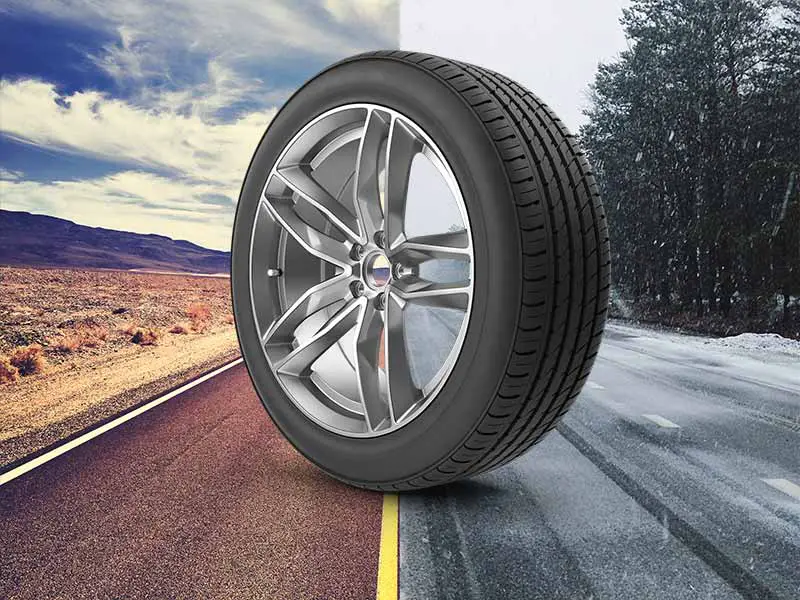There can be a lot of confusion about tire pressure in summer versus winter. There’s also confusion about what is meant by a cold tire when checking tire pressure.
Tire Pressure In Summer Vs Winter
Tire pressure in summer and winter should be maintained at the recommended level on the tire information sticker in your vehicle’s driver’s door jamb year-round, regardless of the temperature outside.
The only exception is if you are using dedicated winter/snow tires for winter driving. Winter tires should have 3 to 5 pounds per square inch more air pressure.
Let’s clarify some misconceptions about how temperature affects tire inflation and performance.
Let’s take a closer look.
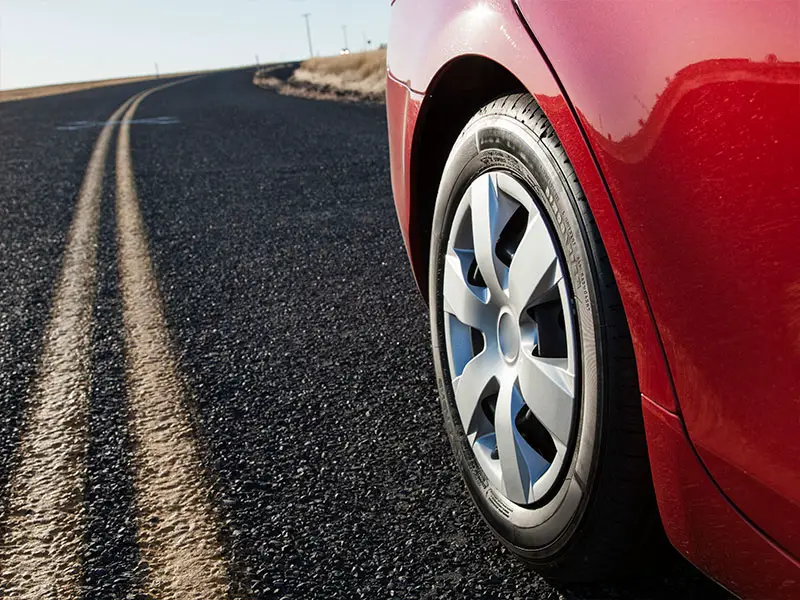
What Should Your Tire Pressure Be In The Summer?
When it comes to summer, it’s important to remember that tire pressure can increase due to the heat. So, it’s essential to check your tire pressure regularly and make sure it’s not too high. Overinflated tires can reduce handling and traction, which can be dangerous, especially on hot summer days.
Your tire pressures should match the manufacturer’s recommendations printed on the tire information sticker on the driver’s door jamb.
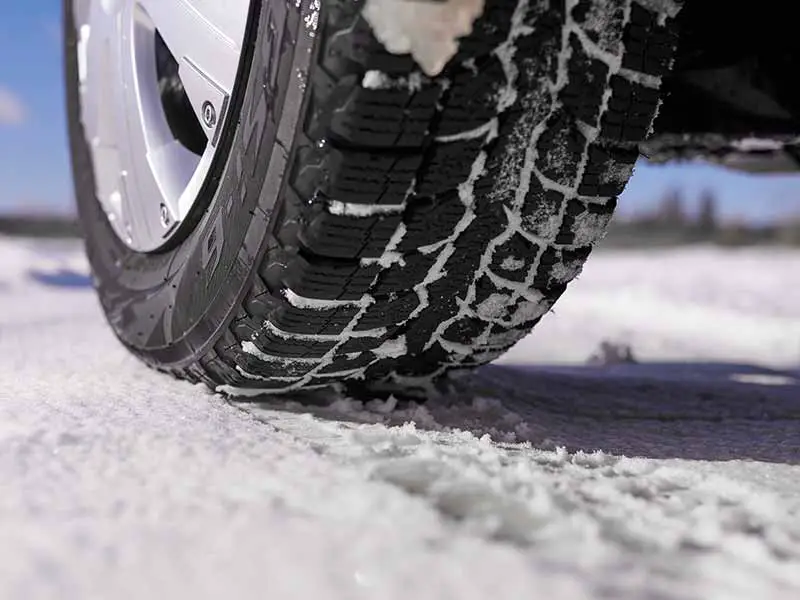
What Should Your Tire Pressure Be In The Winter?
Tire pressure tends to decrease in winter due to cold temperatures. When it’s cold outside, the air inside the tire contracts and causes the pressure to drop. So, it’s crucial to check your tire pressure regularly and make sure it’s not too low. Underinflated tires can lead to reduced fuel efficiency and increased wear and tear on the tires, which can be expensive to replace.
Tires lose air pressure over time as well due to osmosis. Losing air to osmosis and air contracting due to low temperatures makes it common for the low tire pressure warning light to be lit when you get in your car or truck on the morning of the first cold snap of the year.
Is It Better To Have Lower Tire Pressure In The Winter?
While some may think that lower tire pressure in the winter can provide better traction in snowy or icy conditions, this is actually not the case. In fact, underinflated tires can reduce traction and handling in snow and ice, as well as increase the risk of hydroplaning on wet, slushy roads.
While it is common to reduce air pressure when off-roading or when driving on sand, this is not a safe way to improve traction on snowy roads.
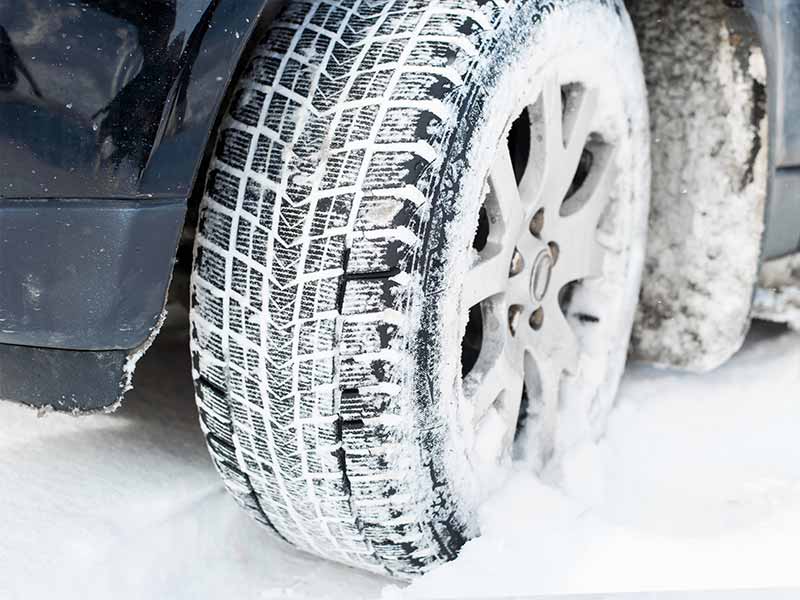
Winter Tire Vs All-Season Tire Air Pressure
As the temperature drops, the air inside the tire contracts, causing the tire pressure to decrease. This can lead to underinflation and reduced performance, especially in cold weather conditions. By filling your winter tires with 3 to 5 psi more than all-season tires, you can help ensure that your tires maintain the proper pressure and provide optimal performance on snowy and icy roads.
Another reason to fill your winter tires (also commonly referred to as snow tires) with a bit more air is that they typically have softer rubber compounds than all-season tires. The softer rubber is designed to provide better grip and traction on snow and ice, but it can also flex more under load, which can lead to increased tire deformation and reduced contact with the road. Filling your winter tires with a bit more air can help counteract this effect and provide better handling and stability on winter roads.
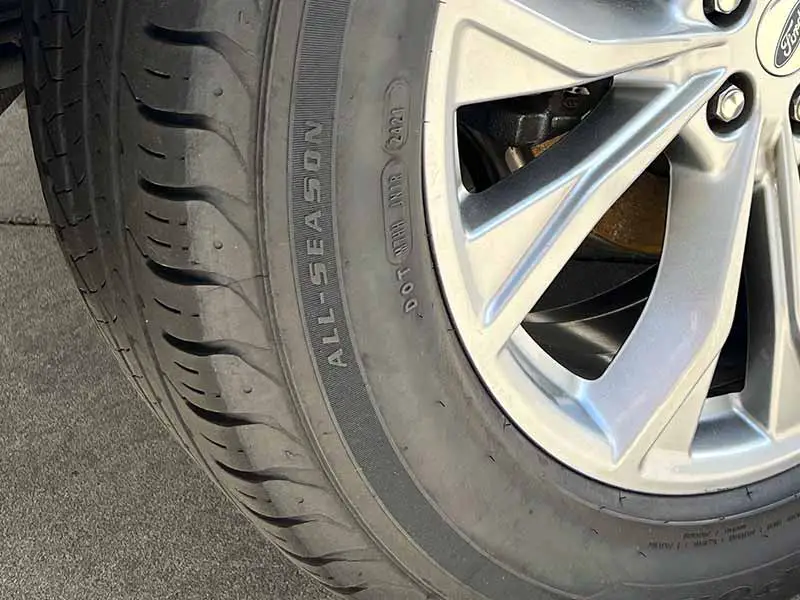
Why Do Tires Lose Pressure In Cold Weather?
When the temperature drops, the air inside your tire contracts, causing the pressure to drop as well. This is because the air molecules become denser and take up less space, which decreases tire pressure.
Cold weather can also cause other changes in your tires, such as decreased tire flexibility and increased tire wear. This can make your tires more susceptible to damage from potholes and other road hazards.
How Much Does Tire Pressure Increase When Driving?
When you drive, your tires heat up due to the friction between the tire and the road. As a result, the air inside the tire expands, causing an increase in tire pressure. The amount of pressure increase can vary depending on a few factors, such as the speed you’re driving, the load you’re carrying, and the outside temperature.
On average, tire pressure can increase by about 1 psi (pounds per square inch) for every 10 degrees Fahrenheit increase in temperature. So, if your tires are filled to 35 psi and the temperature outside increases from 50 degrees Fahrenheit to 80 degrees Fahrenheit, your tire pressure could increase by about 3 psi.
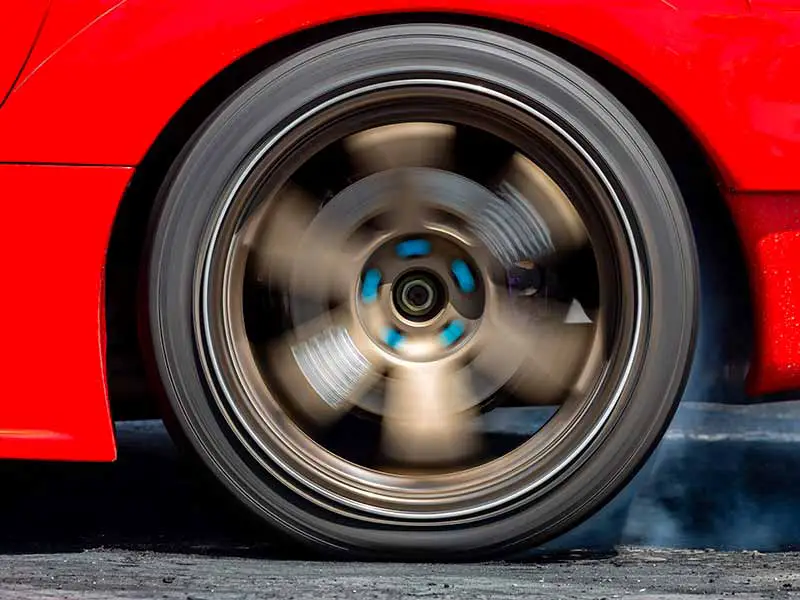
It’s important to note that tire pressure can also increase due to other factors, such as driving on rough roads or carrying a heavy load. This can cause the air inside the tire to compress and lead to an increase in tire pressure.
Cold Tire Pressure Vs Hot
Cold tire pressure refers to the pressure inside your tires when they are at the environment’s ambient temperature, such as when your vehicle has been sitting overnight or for several hours. This is considered the most accurate reading of your tire pressure, as it reflects the pressure of the air inside the tire before it has been driven on and heated up.
Hot tire pressure, on the other hand, refers to the pressure inside your tires after they’ve been driven on and heated up. As your tires heat up from friction with the road, the air inside them expands, causing the tire pressure to increase. This is why it’s important to always check your tire pressure when your tires are cold, as it gives you a baseline reading that you can use to monitor your tire pressure while driving.
Recommended Tire Pressure
The recommended tire pressure for your vehicle can be found in your owner’s manual or on the tire information sticker inside your vehicle’s driver-side door jamb. It’s important to note that the recommended tire pressure can vary depending on the make and model of your car or truck, as well as the type of tires you’re using.

Underinflated tires can cause your vehicle to handle poorly, reduce traction and increase the risk of a blowout. Overinflated tires can also negatively impact your vehicle’s handling and cause uneven tire wear. Maintaining the recommended tire pressure can help improve your vehicle’s handling, fuel efficiency, and tire life.
It’s important to check your tire pressure regularly, at least once a month or before a long trip. Make sure to check your tire pressure when your tires are cold, as tire pressure can increase when driving. And if you notice that your tire pressure is consistently dropping, it may be a sign of a leak or other tire issue that should be addressed by a professional.
What Temperature Is Cold Tire Pressure?
When your tires are cold, their pressure is at its most accurate reading. This is why tire manufacturers and automotive experts recommend checking your tire pressure when the tires are cold before driving on them. This will give you the most accurate reading of your tire pressure and help ensure your tires are inflated to the correct pressure level.
So, when you see instructions to check tire pressure when cold, it means when the tires are the same temperature as the outside temperature. If you use the air pump at your local gas station to inflate your tires, they will never be considered “cold” because you have to drive to the gas station, which causes your tires to heat up.

Craftsman V20 Portable Tire Inflator
This is one of the reasons I highly recommend keeping a portable air compressor in your car or truck. It saves you a trip to the gas station and makes checking tire pressure when the tires are cold simple. Portable air compressors are also invaluable in an emergency situation.
Resources
Below are some links you may find helpful when learning about tires
- Should I increase my tire pressure for winter driving? – Tire Rack
- Should you lower tire pressure to gain traction in snow? – Consumer Reports
Final Thoughts
It’s crucial to check your tire pressure monthly, especially before a long drive. Make sure your tires are filled to the vehicle manufacturer’s recommendations unless you’re using winter or snow tires that need 3 to 5 more psi than recommended for the best grip in winter months.
Keeping your tire pressure at the proper level can help improve your vehicle’s performance, fuel efficiency, and safety on the road all year round.
Good luck and happy motoring.
